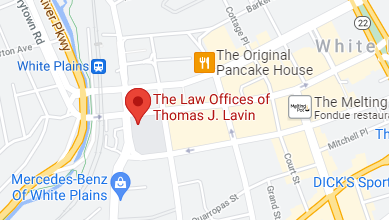If you have any role in the New York construction industry, you should know about Section 240 of the New York Labor Law – the “Scaffold Law.” It was first implemented 132 years ago when wooden scaffolding was still used commonly in the construction of urban high-rises.
In 2017, however, there’s considerable evidence that a law originally intended to protect New York’s construction workers now may have quite the opposite effect and may be putting those workers in harm’s way.
Many observers, as well as a number of construction industry insiders, are saying that the Scaffold Law must be either revised or rescinded as quickly as possible.
What does the Scaffold Law do? It establishes – some would say unreasonably – absolute liability on builders, owners, and contractors for all construction site injuries linked to gravity, heights, and scaffolding. A plaintiff’s own comparative or partial negligence is irrelevant under the Scaffold Law.
When a New York construction worker falls off a scaffold, it does not matter if that worker was drunk, ignored safety directions, used no safety equipment, or personally failed to assemble the scaffolding properly or failed to lock and secure it.
The Scaffold Law says the builder is liable for all scaffolding-related injuries on a construction site – without exception. New York has the only statute of this kind that remains in effect anywhere.
Illinois abolished the only other remaining scaffold law 22 years ago, and the Bureau of Labor Statistics tells us that construction-related fatalities and injuries dropped rapidly and significantly in that state subsequent to that scaffold law’s abolition.
WHAT IS THE CASE AGAINST THE SCAFFOLD LAW?
Why has a statute created to protect New York construction workers ended up apparently, in effect, putting them in more danger? To begin with, the Scaffold Law offers no inducement for builders to pay for additional safety equipment or training.
Builders and contractors are held accountable for all height-and-gravity-related construction injuries and accidents without regard to what actions they take or what resources they invest to enhance safety at a construction site. Most builders spend little beyond what’s minimally required for safety training or equipment.
Because the Scaffold Law makes New York the single state that holds builders absolutely liable for any height-or-gravity-related construction fatality or injury, New York is out of favor with prospective builders.
If they have better alternatives, they build elsewhere. The number of construction projects and jobs that New York has lost because of the Scaffold Law is incalculable.
Because the statute exposes contractors and builders to so much risk, new construction costs in the state of New York are needlessly and egregiously high. “A typical single-family home in New York costs anywhere from $5,000 to $10,000 more than it would without a wholly one-sided Scaffold Law,” according to U.S. Representative John J. Faso (R-Kinderhook), writing in the New York Post.
WHO PAYS THE COSTS?
All New Yorkers pay for the additional cost to public projects like new schools, firehouses, courts, and police buildings. Because of the Scaffold Law, when the cost of a new public building is estimated, half of the figure may be the liability insurance cost alone.
Every year, New Yorkers pay more than $750 million in additional taxes because of costs imposed by the Scaffold Law, according to data compiled by the Rockefeller Institute of Government.
As construction-related deaths and injuries have increased in the five boroughs over the last several years, the legal fees that many contractors and builders pay under the Scaffold Law are also increasing and adding to construction costs.
Of course, every construction-related accident is unique. Construction workers injured in construction site accidents will need sound, personalized legal advice.
After examining the details of a construction accident and injuries, a skilled personal injury attorney can explain a construction worker’s particular legal rights and options.
Many injured workers are eligible for workers’ compensation benefits in New York, but other injury victims may qualify to file a personal injury lawsuit and seek compensation for medical costs, lost wages, and related damages.
Revising or eliminating the Scaffold Law, according to its critics and the researchers at the Rockefeller Institute of Government, would reduce the burden carried by the state’s taxpayers, attract new investments and builders to the state, and also create scores of new construction jobs while reducing the number of construction-site fatalities and injuries in the five boroughs and across the state.
Writing in the New York Post, Representative Faso insists, “we shouldn’t waste a single dollar on excessive liability costs when that money could be better-used building tunnels, improving bridges and rebuilding roads.”
The congressman is introducing a federal legislative proposal that requires every state’s civil courts to consider comparative negligence – instead of imposing an absolute liability standard on builders and contractors – for all tax-funded public construction projects.
IS THERE A CASE FOR RETAINING THE SCAFFOLD LAW?
Of course, the critics of the Scaffold Law have their own critics, who believe that estimates of the costs associated with the Scaffold Law are exaggerated, particularly by insurance companies.
Scaffold Law supporters, including the Building and Construction Trades Council (BCTC) of Greater New York, would like to see increased scrutiny of insurance companies and full disclosure of their pertinent records before any changes are made to the New York Labor Law.
A construction worker who is injured at a construction site in New York can probably obtain workers’ comp benefits, but every injured construction worker should also consult a New York injury attorney who has experience with construction accident cases. Construction work injuries are often quite severe and sometimes permanently disabling.
Those injuries will require the maximum available amount of compensation, so those cases must be handled by a trustworthy injury attorney with the legal skills and knowledge it takes to prevail on an injury victim’s behalf.
Whether or not the Scaffold Law’s defenders or critics are right or wrong regarding the controversial statute and its impact on the state’s construction industry and economy, construction workers will continue to be at risk in New York, and construction will continue to be a dangerous way to earn a living.
If you are a construction worker and you are injured doing construction in New York, seek medical attention immediately, report the accident to your employer, and speak with an experienced Bronx personal injury attorney about your rights and legal recourse.










